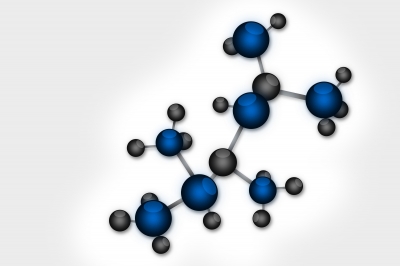This will be a three-part blog post on completing a science project. This initial post will give an overview of what’s involved in a typical science project. The next post will discuss ways to present your data and we’ll wrap up the series with information on participating in science fairs. I encourage students to complete at least one science project during their high school years!
Ohhhh, that dreaded science project. Well, at least, it seems like most families dread them. And, I say ‘families’ because the project always turns out to be a family affair. I think most of us dread those projects because they take over our lives and house for weeks on end and become a teeth-pulling event to get finished. But, regardless, I’m still a big fan of the Science Project. Not only is it a great way to study a scientific process in detail, it’s also a lesson in perseverance, in tackling a large task and in finishing a job well.

Completing a science project is a great learning experience for the high school student!
It is, however, a process with lots of parts and it can be easy to get overwhelmed if you don’t bring it down into manageable pieces.. So, let’s talk through the pieces!
To get started, you need an idea. Well, actually, what you need is a question. For example: “Which battery lasts longer, Duracell® or Eveready®?” – is an easy question to test. You can ask questions about things that affect plant growth, or how fast materials rust or even what produces more electricity, pickles or lemons. Try not to use ideas that simply become demonstrations – usually those are “how something works” questions. Example – asking what a volcano looks like when it explodes doesn’t test anything – it just demonstrates something we already know. It’s usually a pretty cool demonstration, but alas, requires very little in the way of a science project. You will also want to be sure that your question is something that can be answered in a timely manner. Asking which tree grows faster, oak or maple – may take more time than you’re willing to invest.
Once you have come up with your question, the next step is research (not experimentation, just yet). The research step is all about finding out what others have discovered about your question. So, go to the library, get online and better yet, search out folks who work in the field. This is a great time for you to hone your interviewing skills! Keep notes on all of your research and be sure to give credit to all of your sources. Sometimes you may find that there is no direct information on the question that you asked. For example – if you want to know whether rice flour bread rises higher at 375 degrees or 450 degrees – there may not be any specific research out there just yet. In this case, you would research similar topics – like the effect of temperature rising on bread dough in general.
We like to gravitate to Wikipedia as our source for information, but don’t stop there. Wikipedia is a good jumping off point, but because it is open source, its information is not always credible. See this posting on one of Harvard University’s sites. You will want to be able to find the same information from multiple sources to consider it credible.
Once you have completed your research, you will want to take the information that you have learned and formulate your hypothesis. A hypothesis is an educated guess. You have now educated yourself on the subject so you can speculate about what the outcome of your experiment will be. Write out a few sentences outlining what you think the answer to your question will be – and tell why you believe this to be so.
You should also now have a pretty good idea about how to set up your experiment. The experiment is always the fun part, but you need to set it up carefully so that you can truly answer your question. You need to set controls so that you are only testing the one variable. For example, if you asked whether plants will grow better if they are watered with coffee or water, you will only be comparing coffee to water. Everything else must remain the same. So, be sure that you are using the same type of plant, that the plants are all in the same location, have the same exposure to the sun, receive the same amount of liquid, have the same soil, etc. In addition, you will need to ‘repeat’ your experiment a number of times to be sure that you get the same or similar results. If you’re working with plants, that just means having a good number of plants to compare – not just one for each liquid. If you’re testing batteries – be sure to complete several trials for each battery type. You get the picture.
As you go along with your experiment you will need to record your results. Make sure that you use the metric system for any measurements. You will want to have measurable data to work with once your experimentation has been completed. Again, as an example, you can’t just say that coffee was “better” or “worse” for your plants. You should say something like: Coffee caused the plants to grow on average 3 cm taller than plants given water. Set up a log book and keep detailed records. You will also want to note anything unusual or unexpected. Perhaps the leaves all fell off of one plant – or you noticed that insects were attracted to one group of plants more than another. And – take pictures or videos as you go.
Sometimes an experiment just doesn’t go as planned. Feel free to back up and start over if you need to.
Once you have collected all of your data, it’s time to analyze it. Take your chart of data and build a graph that depicts your results. This will help you visualize what happened. You may want to try a couple of types of graphs (pie charts, bar graphs, line graphs, etc.) to see which one showcases your results best. At this point, you can determine whether or not your hypothesis was correct. If it wasn’t correct, try to determine why not.
And, lastly, it’s time to write your conclusion and real life application. Now that you’ve done all of this work – what does it really mean? First, were your results actually conclusive? Can you say with certainty that you have a clear answer? Sometimes you really can’t. But, if you can – what does that mean in real life? In other words, how can other people apply what you have learned?
A typical project can take eight to twelve weeks to complete, so by breaking it down into these pieces you can find it manageable and very doable. Just don’t procrastinate! 🙂
Stay tuned for the next two posts: Presenting your Data and Participating in Science Fairs.
Some resources:
An Insider’s Guide to Successful Science Fair Projects
Ideas from All Science Fair Projects
~to your success,
Joanne
Image courtesy of renjith krishnan / FreeDigitalPhotos.net





[…] Part One […]